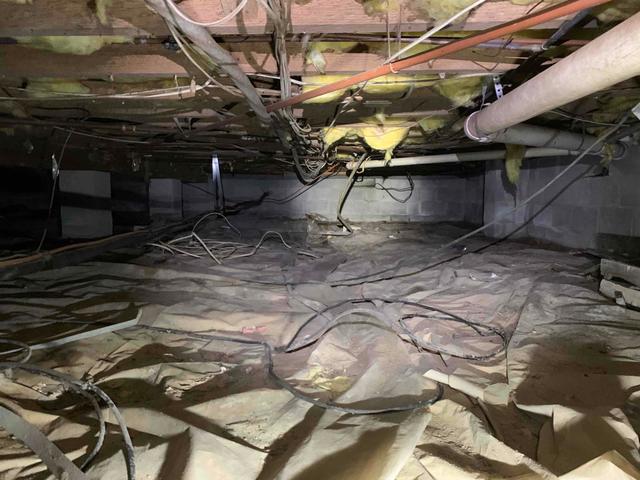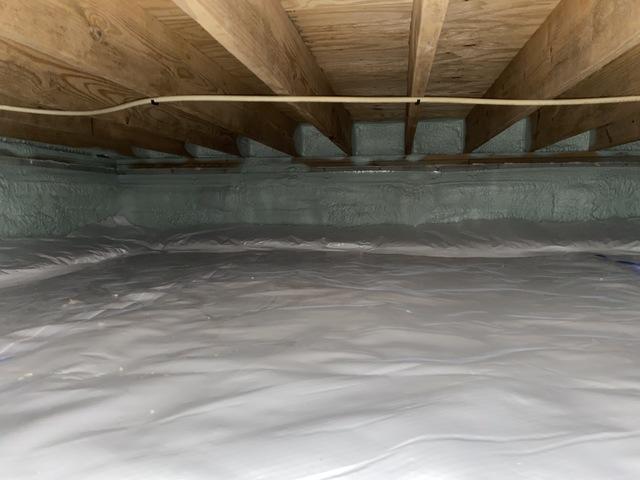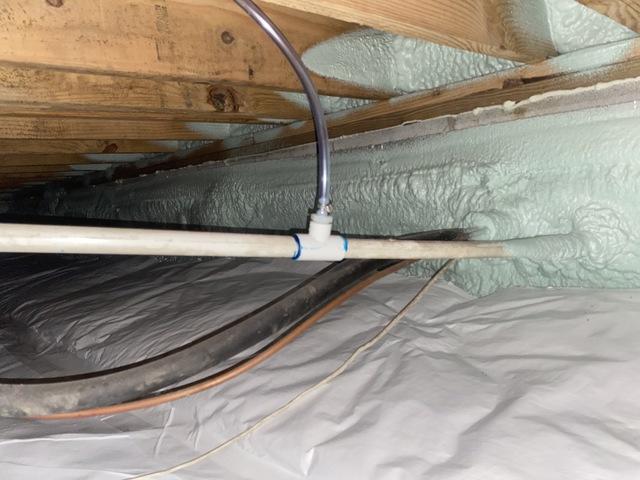
Mold and Mildew Growth
Mold and mildew have formed on the floor joists of this crawl space, which can occur on any organic materials so long as the relative humidity reaches over 60% during warmer temperatures. The musty odors and mold spores can rise up into the home and cause irritation to those with allergies and asthma.

Inefficient Vapor Barrier
The flimsy 6-mil liner originally installed in this crawl space is not properly sealed, leaving gaps and exposing the crawl space to moisture rising out of the earth. This can affect the relative humidity of the crawl space, and make it difficult for service personnel to navigate through this damp and messy environment.

Porous Foundation Walls
The foundation walls of this crawl space are made of porous cinderblocks, which means they can allow air and moisture to seep through them, and efflorescence can form along the walls when the salts and sediments are pulled towards the surface by moisture. The open vents lining these walls also allow outside air and moisture to influence the relative humidity and condition of the crawl space.

Mold Remediation
An antimicrobial application, called Shockwave, was used on any mold-affected areas in the crawl space. Shockwave will eliminate mold and mildew growth, but it will not remove any staining left behind from the growth. A SaniDry Sedona dehumidifier and Little Giant condensation pump are installed to help regulate the relative humidity of the crawl space and to mitigate any future mold growth.

CleanSpace Vapor Barrier
A 20-mil CleanSpace vapor barrier was installed over the dirt flooring of the crawl space to help protect it from moisture rising out of the earth. This heavy-duty liner is wrapped around all piers, sealed with vinyl tape, and mechanically fastened to the foundation walls six to eight inches above outside grade.

Spray Foam Insulation and Open Vents
The open vents lining these foundation walls were covered using custom foam board pieces and sealed with can foam, then the walls were covered using closed-cell spray foam. At an inch and a half thick, the spray foam acts as an air barrier and vapor retarder, giving protection to the crawl space from any outside influence.

